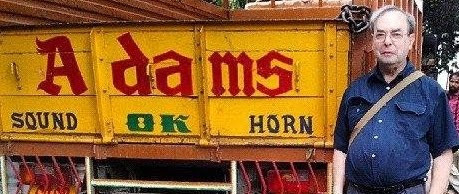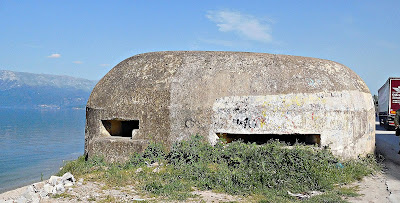Bunker by Lake Ohrid, near Pogradec
Most of the defensive bunkers constructed in Enver Hoxha's Albania were in the form of hemispherical concrete domes (see illustration below).
Here, I describe an unusual one that I saw next to Lake Ohrid, just north of Pogradec.
Typical Hoxha era bunkers (near Lin)
Near the village of Memelisht (north of Pogradec), we examined the huge bunker on the lakeshore (illustrated above). It was like an elongated egg in plan. Part of it protruded into the lake, and the rest caused the road to curl around it. Its entrance faced inland. 2 gun slits faced north - one slightly towards the west and the other slightly towards the east. A third faced south towards Pogradec. I peered inside, and saw a central passage with doorways leading to 3 side rooms. The corridor was clean and painted white. A few discarded bottles lay on its floor. This ‘bunker’, which was so different from other bunkers that we saw in Albania, puzzled me. Valent at the hotel believed that it had been built by the Italians to control the road between Elbasan (and the north of Albania) and the south of the country as well as Greece. This seemed a reasonable explanation for its existence and positioning.
Does anyone know exactly who built it. Was it the Italians, the Albanians, or someone else?
Now, please visit:







